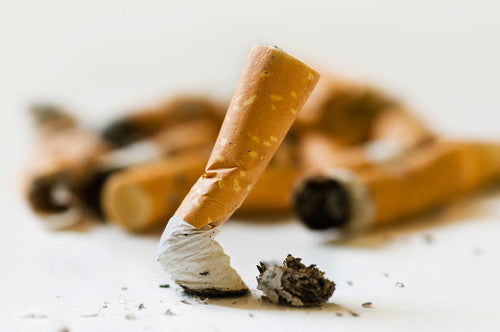
Are you still 'smoking' in surgery? It’s time to clear the air!
By guest contributor Penny J Smalley RN CMLSO MACORN
It’s a three a day habit
In 1981, a research group in Japan, headed by Dr. Y. Tomita ¹, found that if you vapourised one gram of tissue with a CO2 laser, you produced a plume that contained the same amount of mutagenic material found in three cigarettes. More concerning was the fact that the same experiment done with diathermy doubled that hazard to what could be found in six cigarettes. Further research verified that the harmful contents of cigarettes, and therefore in surgical plume, included carbon, neurotoxins, carcinogenic gases, and mutagens, along with additional organic hazards such as cellular debris, live and fragmented viral particulates including HPV, HIV, and Hepatitis B, bacteria, and blood borne pathogens.
Ninety-five percent of you are 'smokers'
Healthcare team members, in a wide variety of practice settings (OT, clinics, private medical and dental practices, vet surgeries, research facilities, etc.) are exposed to these airborne contaminants every day when working with energy based devices such as diathermy, ultrasonic devices, and lasers that cut, cauterise, and vapourise tissue. This applies to approximately 95% of all surgical procedures! And yet, those at greatest risk, do not routinely insist on the protection afforded by appropriate local evacuation and filtration systems.
Local suction apparatus required
It is important to know that these risks are not mitigated by use of general room ventilation, air exchanges, or the use of any type of surgical mask. Instead, it requires the use of local exhaust ventilation placed close to the site where the surgical plume is generated, and captured before the plume escapes and reaches the ocular area or the breathing zones.
Poor healthcare worker health
Both acute and long term risks to personnel include ocular, aero-digestive, and respiratory symptoms and illnesses. It is very rare for a nurse working in theatre to not have experienced the headache, cough, nausea, watery eyes or flu like symptoms, during a case that produced a heavy amount of surgical plume!
Poor patient outcomes
Another significant fact to consider, is that accumulation of surgical plume in the intra-abdominal cavity during laparoscopic procedures, can result in absorption of the toxic materials into a patient’s blood stream, which can result in persistent symptoms, prolonged recovery, and potential long term harm, especially in pregnant women and older, more debilitated patients.
Call for building surgical plume standards into day to day practice
Healthcare professionals are becoming increasingly aware of the hazards of exposure to surgical plume, yet compliance with controlling this hazard is still not universally mandated. In order to initiate a facility wide plume management program, it is necessary to shift the focus from the clinical arena, to the regulatory arena. Because surgical plume is a known workplace hazard, compliance is dependent on the involvement of risk management, workplace health and safety, infection control, employee health, and biomedical engineering, as well as that of medical and nursing administration, all of whom need to become key stakeholders, and must work together towards eliminating this workplace hazard. Individual preference should never be allowed to dictate who does or does not work in an at risk environment!
There are many hazards in surgery, some easier than others to manage. Surgical plume is one of those that is easy to eliminate. All it takes is education to help everyone understand the hazards and risks, allocating the resources needed, and the will to do it. It is now time to quit “Smoking in Surgery” and Clear the Air - for all healthcare workers and for the patients in their care!
¹ Tomita Y., Mihashi S., Nagata K., Ueda S., Fujiki M., Hirano M., and Hirohata T. (1981). Mutagenicity of Smoke Condensates Induced by CO2 - Laser Irradiation and Electrocauterization, Mutation Research.
Bravura Education would like to thank Penny J Smalley for generously agreeing to be our guest contributor this week. Penny is a highly regarded academic, teacher and registered nurse who has a passion for laser safety, in particular eradicating plume from the OT.
Post Disclaimer
This blog post has been vigilantly researched and fact checked to ensure that it is accurate, reliable and up to date. You must keep in mind that errors and omissions may occur and that we welcome any feedback or corrections in this regard. We encourage you to do your own research to verify the accuracy and contemporary nature of the information presented.
